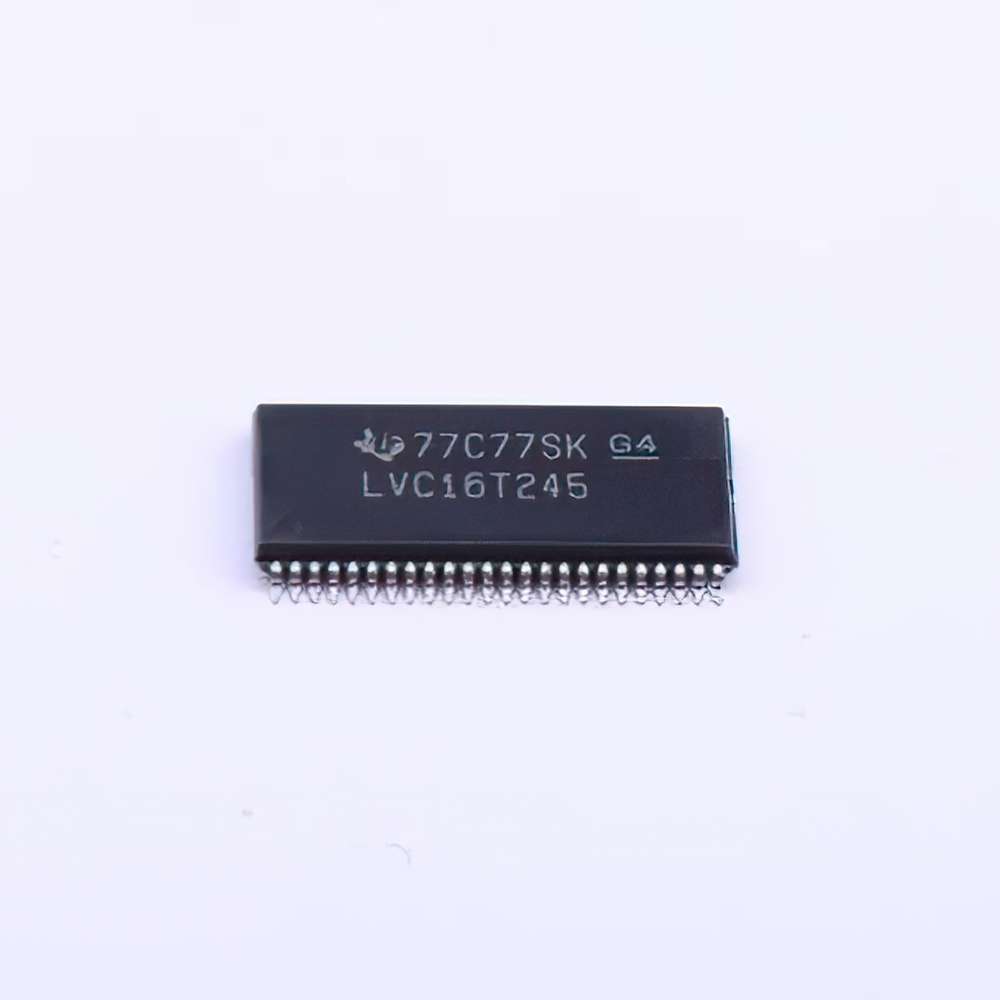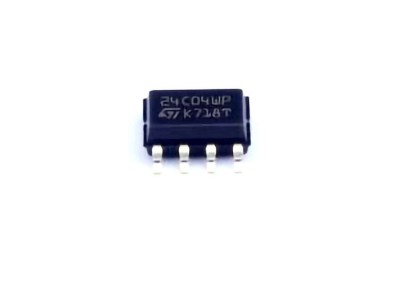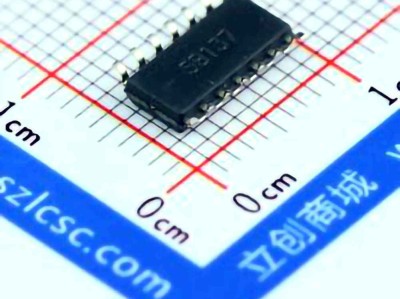
Understanding the SN74LVC16T245DGGR Logic Level Shifter
The SN74LVC16T245DGGR is a popular integrated circuit (IC) designed for bidirectional voltage-level shifting applications. It is widely used in digital electronics to interface between different logic families, allowing devices that operate at different voltage levels to communicate effectively. Whether used for microcontroller-to-sensor communication, interfacing with FPGA s, or connecting logic circuits of varying voltages, the SN74LVC16T245DGGR plays a crucial role in ensuring smooth data transfer between components.
However, like all electronic components, the SN74LVC16T245DGGR can experience issues where it fails to respond or perform as expected. Understanding the root causes of these issues is essential for troubleshooting and resolving problems. In this section, we’ll examine common reasons why a SN74LVC16T245DGGR might not respond and discuss how to diagnose and address these issues.
1. Voltage Mismatch: A Primary Culprit
One of the most common reasons for the SN74LVC16T245DGGR not responding is a voltage mismatch between the logic levels of the connected devices. The IC is designed to work within specific voltage ranges, typically 1.65V to 5.5V, depending on the VCC ( Power supply) voltage. When the input or output voltage levels of the connected devices exceed or fall below this range, the IC may fail to function properly.
For example, if one device is operating at 3.3V logic and another at 5V logic, but the SN74LVC16T245DGGR is configured incorrectly or not supplied with the correct voltage, it will be unable to shift the levels properly. This mismatch can result in no response or intermittent failures.
Solution:
Check the voltage levels of the devices connected to the IC and ensure that they fall within the acceptable voltage range for the SN74LVC16T245DGGR. Additionally, verify that the VCC pin of the IC is correctly supplied with the appropriate voltage to match the logic families you're working with. Double-check the datasheet for the specific voltage ranges to ensure correct operation.
2. Improper Connection of Control Pins
The SN74LVC16T245DGGR has several control pins, including the direction control (DIR) and enable (OE) pins. These pins are critical for proper operation, and improper connections can lead to the IC not responding as expected. For example, if the direction control (DIR) pin is not configured correctly, it could cause the logic level shifter to remain in a one-way or "stuck" state, where it does not switch between high and low states.
Similarly, the output enable (OE) pin must be properly connected to allow for the activation of the output drivers. If this pin is left floating or not connected to the correct voltage level, the IC’s outputs will remain in a high-impedance state, preventing any data transfer.
Solution:
Ensure that the DIR and OE pins are correctly connected according to your system’s requirements. The DIR pin controls the direction of the data flow, while the OE pin enables or disables the output drivers. If the output enable is tied to a logic high level (assuming active-low output enable), this will allow the data to flow between the logic levels. Make sure to avoid leaving these pins floating.
3. Grounding Issues
Another common problem is poor grounding or incomplete ground connections, which can prevent the SN74LVC16T245DGGR from responding correctly. The IC relies on a solid ground connection to properly reference the voltage levels and ensure accurate shifting between devices. If there is an issue with the ground connection, the logic level shifter may fail to recognize input signals or output the correct levels.
Solution:
Ensure that the ground (GND) pin of the SN74LVC16T245DGGR is securely connected to the common ground of your circuit. Verify the integrity of the ground traces on your PCB, ensuring there are no broken or poorly connected paths. A poor ground connection can introduce noise or create unstable voltage levels, leading to malfunctions.
4. Overdriving the Inputs
The SN74LVC16T245DGGR is designed to handle specific voltage levels on its inputs. If the input voltage exceeds the maximum rated voltage for the IC, it could damage the internal circuitry or cause the IC to malfunction, leading to a lack of response. Overdriving the inputs with voltages higher than the IC can handle may result in permanent damage, causing the IC to stop functioning entirely.
Solution:
Always verify that the input voltage levels fall within the specified limits for the IC. If necessary, use resistors or other voltage-limiting components to ensure that the input voltage does not exceed the rated maximum. Check the datasheet for the maximum input voltage specifications to avoid overdriving the inputs.
5. Timing and Propagation Delay
The SN74LVC16T245DGGR, like any logic level shifter, is subject to timing constraints and propagation delays. If the timing of signals is not properly synchronized, the IC may fail to respond in the desired manner. For example, if the input signal changes too quickly, the IC may not have enough time to shift the logic level, leading to missed or incorrect transitions.
Solution:
Ensure that your input signals have proper timing margins. If you're operating at high speeds, make sure that the IC's propagation delay is accounted for in your design. Slower edge rates or added capacitive buffering might help if timing mismatches are a problem. Check your clock or signal edges to ensure that they are clean and not excessively fast for the IC to process.
Additional Troubleshooting Tips and Solutions for SN74LVC16T245DGGR Not Responding
While the issues discussed in Part 1 are some of the most common causes of a non-responsive SN74LVC16T245DGGR, there are several other potential factors that can affect the IC’s performance. In this part, we’ll dive deeper into other troubleshooting strategies and solutions that can help resolve issues with this important logic level shifter.
6. Signal Integrity and Noise
Signal integrity is crucial when working with logic level shifters like the SN74LVC16T245DGGR. If there is significant noise in the power supply or signal lines, it can interfere with the proper shifting of logic levels. Noise sources such as high-frequency switching power supplies or long PCB traces can cause the IC to malfunction or fail to respond as expected.
Solution:
To reduce noise, ensure that your signal lines are short and well-shielded, especially in high-speed circuits. Use decoupling capacitor s (typically 0.1µF to 0.01µF) close to the VCC pin to filter out power supply noise. Ground planes can help to reduce the effects of noise and ensure stable logic level shifting. If the layout allows, consider using low-inductance vias to connect signals and power planes.
7. Device Overheating
Overheating can lead to erratic behavior or complete failure of the SN74LVC16T245DGGR. If the device is operating in a high-temperature environment, it may exceed its thermal limits, causing the internal circuitry to malfunction. This could be due to excessive current draw, inadequate cooling, or poor PCB layout design.
Solution:
Check the operating temperature range of the SN74LVC16T245DGGR and ensure that the ambient temperature is within this range. Make sure the IC is not dissipating excessive heat. Consider using heat sinks or improving airflow around the device if necessary. If the IC is part of a high-power circuit, ensure proper current-limiting techniques are in place.
8. Faulty IC or Manufacturing Defects
Sometimes the problem may be due to a faulty IC or a manufacturing defect. If all other troubleshooting steps fail, it’s possible that the SN74LVC16T245DGGR itself is malfunctioning.
Solution:
To verify whether the IC is faulty, replace the component with a known good unit. If the new IC functions correctly, the original IC may be defective. If you’re using a large batch of ICs, consider checking multiple units to ensure the issue is not widespread.
9. Inadequate Power Supply
Inadequate or unstable power supply voltage can cause the SN74LVC16T245DGGR to fail to respond. Even if the power supply is nominally providing the correct voltage, fluctuations or transient spikes can lead to issues with IC operation.
Solution:
Verify that the power supply is stable and provides the correct voltage levels. Use a multimeter or oscilloscope to check for voltage fluctuations or noise on the power rails. If necessary, add capacitors to smooth out any noise and ensure stable voltage levels.
10. Incorrect PCB Layout
Improper PCB layout can lead to a variety of issues with the SN74LVC16T245DGGR, such as excessive parasitic inductance or capacitance, which can interfere with signal integrity and cause the IC to malfunction.
Solution:
Carefully review the PCB layout to ensure that the signal traces are as short and direct as possible, especially for high-speed signals. Make sure that the power and ground traces are adequately sized to handle the current without introducing significant voltage drops or noise. Additionally, ensure that decoupling capacitors are placed as close to the IC as possible.
Conclusion:
The SN74LVC16T245DGGR is a robust and reliable logic level shifter, but like any electronic component, it can experience issues that prevent it from functioning as expected. Understanding the common causes of malfunction and using a systematic approach to troubleshooting will help you resolve these issues efficiently. By checking for voltage mismatches, ensuring proper pin connections, and considering other factors such as signal integrity and power supply stability, you can keep your design working smoothly. With the right knowledge and care, the SN74LVC16T245DGGR will continue to serve as a crucial component in your logic level shifting applications.
Partnering with an electronic components supplier sets your team up for success, ensuring the design, production, and procurement processes are quality and error-free.


